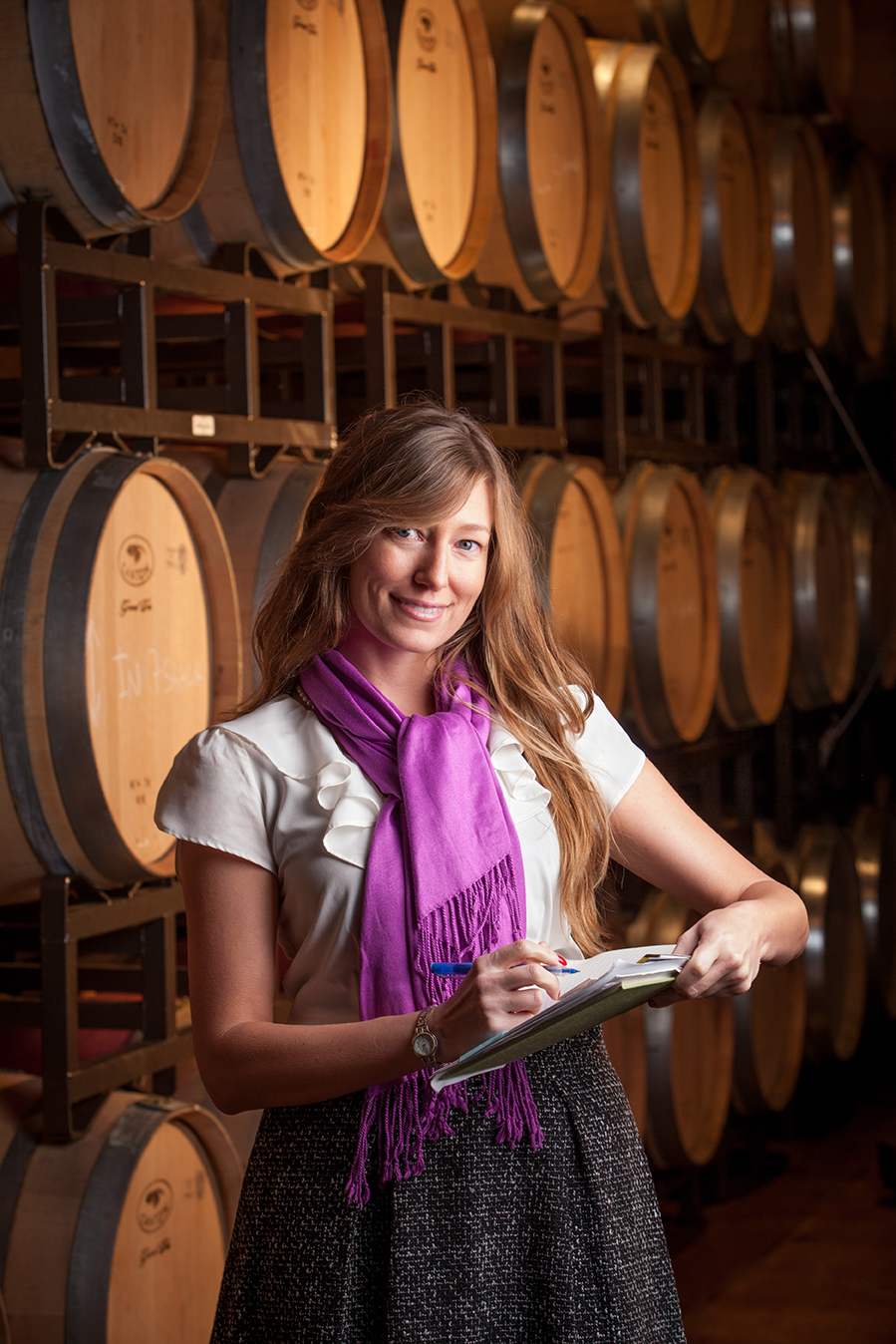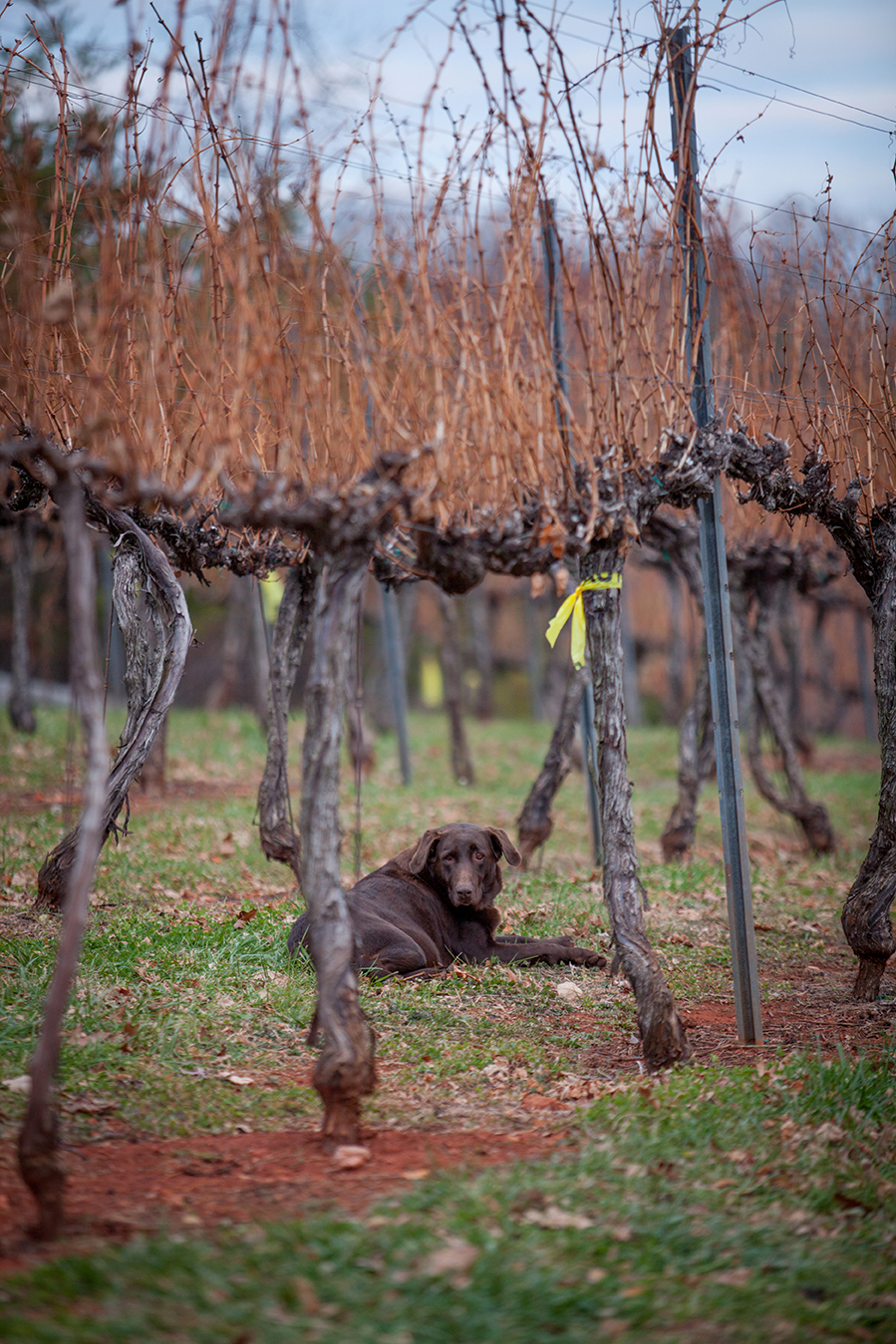Stephanie Bolton: The Science of Wine
By: Cynthia Adams | Photos By: Nancy Evelyn
Do you know terms such as “ozone sanitation,” “integrated sensory analysis,” “wine grape cultivars,” “wine aromas and interactions with inoculated yeast,” or, “malolactic fermentation” when it comes to wines?
Ever heard of mycotoxin contamination?
Many wine aficionados haven’t.
But Stephanie Bolton, a doctoral student with degrees in chemistry and food science, does know these terms. These pertain to wine, wine making and wine flaws—not attributes you necessarily want wine in your glass to possess. These terms are all important to the agribusiness of wine and oenology, a better-known term, which are fields of study vast and complex enough to include subfields.
It happens that producing a very drinkable wine is not so simple.
Vine-growing and harvesting is known as viticulture, and is taken from the Latin word for vine. Oenology—a better known term— considers the science and study of all things pertaining to wine and winemaking but not the actual growing and harvesting of grapes.
Aiding in the cause of actual wine making, there are those with an astute, educated, refined “nose”—who teach the nuances of wine characteristics, especially flaws, which wine producers must understand and master. As wine making expands within Georgia and the Southeastern United States, the science and agribusiness of vineyards expands and intensifies.
The depth of knowledge for those involved with the sciences of wine is something quite different than the fan of a good vintage. At times it is clinical, difficult, and—if you ever get a whiff of brett— enough to make you pinch your nose firmly closed.
STEPHANIE BOLTON, a doctoral student in plant pathology, sat on the front row at the Southeastern United States Grape and Wine Symposium, leaning intently towards the instructor, Melba Allen. Allen is a French resident and visiting viticulturist who traveled from France to California vineyards and then on to the Southeast to teach wine makers and growers. Allen is also a sommelier and importer, and offers expert wine knowledge to restaurants as well. She is there teaching the students—20 men and women—about the flaws in wine that will render wines undrinkable, and certainly, unsaleable.
The potential chemical disorders in wine, Allen explains, are many and serious.
Bolton herself, 33, nods seriously. She is deeply passionate about her work, including the hard science of wine. And she loves working in close proximity to all things wine-related. “I love learning,” she says in a lighter moment. One Christmas, she asked her family to give her only wine reference books.
A graceful, slightly built young woman with light brown hair which flows down her back, she absorbs Allen’s comments and keeps notes. She has blue eyes, which are squinted in concentration as Allen speaks. If all goes to plan, Bolton will one day be playing a similar role to Allen’s, educating and teaching about the science of wine.
In Bolton’s case, she followed an undergraduate degree in chemistry with a stint teaching chemistry and an internship in Columbia Valley in Washington to learn more about wine. She came to UGA in 2010, earning a master’s degree in food science in 2012. She spent five summers at UGA’s campus in Cortona, Italy, teaching a study abroad course on wine to American students in Tuscany.

“Professor Phil Brannen’s excellent reputation with grape growers has greatly aided the research. Both professors, Phil Brannen and Anthony Glenn, are UGA Graduate School alumni themselves,” says Bolton, a Double Dawg.
UGA’s Cortona program galvanized Bolton to pursue the ultimate goal, a dream and passion, she says, to become a professor who leads successful study abroad programs focused upon wine.
This past fall, Bolton says she had a paradigm shift while attending Emerging Leaders, a leadership training experience for selected graduate students conducted by the Graduate School. “I want to be a Wine PhD,” Bolton wrote on a poster during the 2014 UGA Emerging Leaders conference in Dillard, Ga. “I will be a wine researcher and a professional wine educator, with a study abroad program for American university students.”
Bolton is well on her way. Her Italian is good enough to communicate easily concerning food and wine. Her research is nearly complete for her dissertation which will concern potential mycotoxin risk in wines produced from Vitis vinifera grapes in the Southeastern U.S.
A few weeks after the symposium where she dove into industry problems alongside vineyard owners, Bolton completed a log of over 200 bottles of wine in a large-scale sampling of Vitis vinfera wines and wine grapes originating in the Southeast. Each will be evaluated for technical problems such as mycotoxigenic fungi, which can create off aromas in bottled wine. She will assess the bottles for the presence or absence of mycotoxins, which are rare but potentially dangerous for humans. “In Europe, everyone is aware of them—in America, not so much,” Bolton explains. In her work, none of the toxins have been found in high levels. To date, there is no legal limit in the U.S.
Bolton is also working to identify current beneficial and at-risk practices through producer surveys of viticultural and winemaking techniques.
Of course, Bolton is diplomatic when conducting research with vineyard owners. She has found the southeastern wine industry to be very cooperative, even eager for research in this challenging environment and seeks their full cooperation with the research she performs under two UGA professors, Phil Brannen and Anthony Glenn. (Bolton and Glenn, an adjunct professor in toxicology and mycology research, are the lead authors of the study.) It isn’t difficult for Bolton to be diplomatic. Given her love of vineyards and all things wine, she views those involved with wine production as extremely positive on many levels. Vineyards and wine sales not only produce a valuable product but support new jobs and tourism. On a very human scale, enhanced tourism strengthens economies and has real financial impact.
“Vineyards and rebuilding have shaped communities,” she says.
In the Southeast, the bigger worries for wine growers are problems such as powdery and downy mildew. The romantic roses often planted in vineyards—these, Bolton explains, are the canary in the mine, tipping wineries off to pathologies before they affect the vines.
Bolton writes a weekly Instagram for the American Wine Society Educational Foundation, a new foray into social media for the group who awarded her a two-year scholarship. As she writes in an email later, two scholarships and a USDA assistantship offset some of her financial worries while she continues her final months of doctoral work. But she still keeps a job at an Athens restaurant, squeezing in a shift whenever possible.
The Southern Region Small Fruit Consortium has also given her research group a grant to fund a portion of the research. “It’s paid for a lot of the travel expense for grape and wine sample collection,” she says. Still, like most graduate students, she worries. The need for research support is a nagging theme. “Perhaps I’ll be able to be so generous one day!”

A Thirst for Knowledge
The third annual Southeastern United States Grape and Wine Symposium was not a chatty opportunity for fellow winemakers and vintners to imbibe. It addressed the agribusiness of wine—and technical matters that concerns and most of those gathered are winemakers or vineyard owners. Enology studies like those at the symposium include grape and wine science, winery and vineyard operations, wine production and analysis and grape pests, disease and disorders.
The Surry Community College hosting the seminar is set near the Blue Ridge parkway and is itself part of the Yadkin Valley wine region. The winery on the campus is a teaching winery, teaching students crushing technologies, fermentation, and all the steps leading from grape to bottled product. Students learn to produce, bottle, and label and market the wines produced. They have labs, classrooms, a wine resource library, and a climate controlled wine library at the small college. This supports serious agribusiness, and regional wine makers from a variety of states are familiar with the work here.
During the seminar, students considered topics in research and field findings. They spent hours learning how to evaluate and pinpoint problems with wine and to conduct what Allen calls a “practical sensory evaluation.” During the evaluation, wines were scrutinized by gathered professionals, many of whom already own vineyards or make wines. The varieties considered during their symposium included, among others, Chardonnay, Traminette, Manseng, Sangiovese, Cabernet Sauvignon, Tempranillo, Chambourcin, Syrah, and Petite Verdot.
Allen worked methodically through a blind tasting flight of 10 white wines, which were chewed, swished and spat out. In tandem with Allen, the students were asked to identify the wine, different characteristics within the wine, and whether or not they determined it was flawed.
If flawed, they must correctly assess exactly how they are flawed.
Evaluations by the attendees included comments such as “austere,” or “tight in the mouth,” or “retro nasal,” or “airing off,” or “out of bounds—unbalanced,” or “mineral,” or “re-acidifying.”
It isn’t a short list of possible problems that can assault wine, Allen explained. Wines can have olfactory defects such as cork taint, or “TCA” for short, best known to chemists like Bolton as tricholoranisole. TCA has a geranium smell, or a wet cork, moldy smell. There is also a bacterial attack waged by acetaldehyde. Allen demonstrated the odor hydrogen sulfide produces by proffering a stoppered vial with a foul odor. She discussed the tell-tale cauliflower smell of mercaptan, which can also smell like rotten onion.

Bolton syphoning wine from barrel in the barrel room at Wolf Mountain Vineyard. Bolton is a Plant Pathology student whose primary focus is wine (and grapes).
“Hygiene is the best prevention,” Allen explained. Fungal or yeast deviators, acetic acid, ethyl acetate, lactic acid and tartaric acids were among the many problems she described. But it was the dreaded barnyard smell of Brettonomyces vini, or “brett,” that was the worst, most assaulting smell.
Allen says this odor—the distinctive and powerful odor of “brett,” makes her feel ill. Olfactory tests followed, and students sniffed vials and then determined what flaw they were smelling. Students were later put to the test during the blind tasting, during which they were expected to analyze for flaws, including identifying the dreaded “brett.” The evaluation required that if the students detected a flaw they had to become precise detectives. They had to identify precisely what flaw they sensed and pinpoint it further—for example, whether it arose from a hygiene issue or was a flaw owing to sub-threshold levels of reduced sulphur compounds.
Bolton, engaged and animated, was actually elated by the exercise. “It can be exciting to find a flawed wine since they are rare,” Bolton said afterward. “It’s good for learning.”
Wine problems abounded—making one wonder how a good bottle ever makes it to the store shelf at all. It isn’t enough that a winemaker produces a flawless wine. Even factors outside a bottle can be problematic. Typically dark green in color, wine bottles are dark for a reason. Light may be good for grapes on the vine, but it is murderous for vulnerable wines.
Bolton says she feels very privileged to conduct research on wine and wine grapes in the under-studied Southeastern U.S. “We have a unique environment with a plethora of friendly growers, tremendous university cooperation, and a wine community with a thirst for knowledge. I couldn’t think of a better place to study wine pathology!”
For more information see Stephanie Bolton’s Instagram: @bigwinesmallpocket
WINE AGRIBUSINESS in GEORGIA
THE CENTER FOR AGRIBUSINESS AND ECONOMIC DEVELOPMENT, CAED, was commissioned to review survey data and assess the wine industry impact upon the state in September 2013. They found that Georgia’s economy is impacted by the wine industry in three ways: grape production, winery and vineyard operations and visitor expenditures. According to CAED, Georgia wineries and vineyards and visitor spending results in an estimated $81.6 million in output. The industry generates another $4.1 million in tax revenue.
Fast Facts
**Grape production alone results in a direct contribution of $3.4 million, with a total state contribution of $6.4 million and 44.5 jobs.
**Winery and vineyard operations contribute $15.1 million in sales directly, with a total of $23.4 million and 95.7 jobs attributed to winery and vineyard operations.








